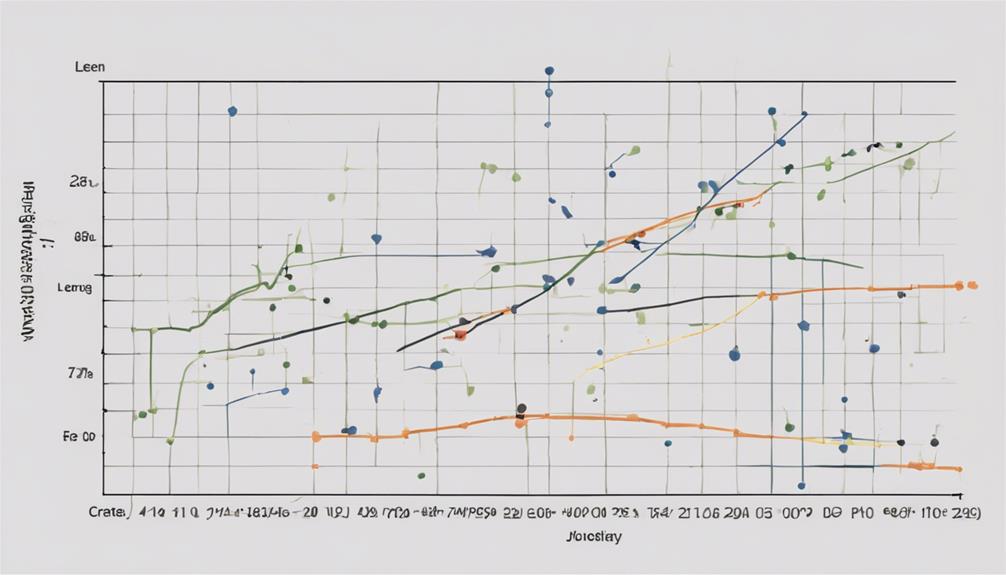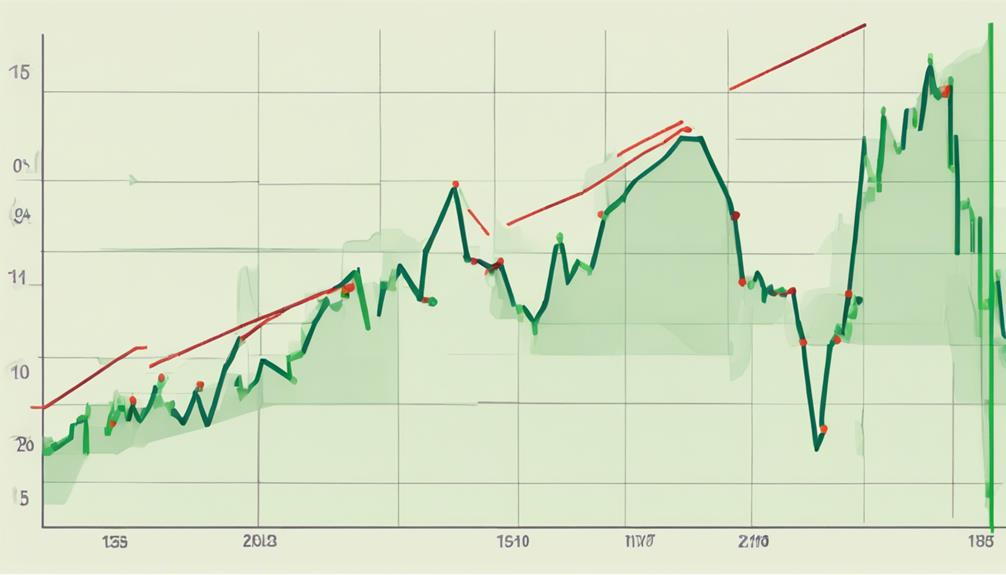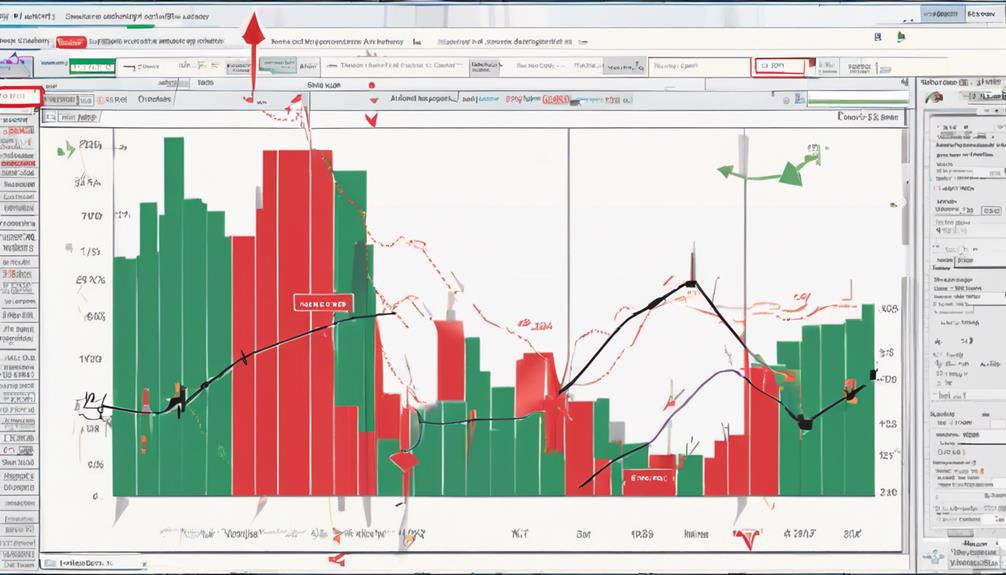So, you've heard about the Advance Decline Line (ADL) but are unsure how it can benefit your trading strategy.
Well, imagine having a tool that goes beyond just tracking individual stock prices and provides a broader view of market health and participation.
The Beginner's Guide to Advance Decline Line will walk you through the basics of this powerful indicator, offering insights that could potentially enhance your decision-making process in the dynamic world of trading.
Ready to uncover how the ADL could be your key to unlocking a deeper understanding of market trends and sentiment?
Understanding the Advance Decline Line
Analyzing the Advance Decline Line (ADL) enables you to gain valuable insights into stock participation and market breadth dynamics. The ADL acts as an indicator by measuring the difference between advancing and declining stocks daily, providing a clear picture of market participation.
Calculated by subtracting declining stocks from advancing ones, the net advances determine the ADL's direction. A rising ADL signifies strong market breadth and bullish sentiment, reflecting a healthy market. Conversely, a falling ADL indicates weakening market breadth.
Moreover, observing any divergence between the ADL and the market index can serve as a warning sign for potential trend reversals. Understanding these aspects of the ADL can help you navigate the market with more informed decision-making.
Calculating the ADL Indicator

To calculate the ADL indicator, subtract declining stocks from advancing stocks on a daily basis and add the net advances to the previous ADL value. This formula, ADL = Net Advances + Previous ADL, helps track the cumulative trend in market breadth.
The ADL line is a useful tool for understanding stock participation in market movements. It distinguishes between index movements influenced by a few large-cap stocks and those driven by a broader market trend. By observing the number of advancing and declining stocks, traders can gauge market sentiment and potential shifts in stock prices.
Calculating the ADL indicator is essential for interpreting market breadth accurately and making informed trading decisions based on the underlying trends.
Interpreting the ADL Indicator

When interpreting the ADL Indicator, observe the relationship between advancing and declining stocks to gauge market breadth accurately. Here are some key points to consider:
- Rising A/D line: Indicates positive market sentiment and broad participation in the rally.
- Bearish Divergence: Falling ADL suggests weakening market breadth and potential bearish sentiment.
- Confirming Market Trends: Divergence between ADL and the market index can signal trend reversals, helping you confirm or contradict market trends based on price movements.
Understanding these relationships can provide valuable insights into market sentiment and help you make more informed decisions when participating in the market.
Advantages of the ADL Indicator

If you want to enhance your market analysis and trading strategies, leveraging the ADL indicator offers significant advantages in predicting potential trend shifts and confirming market sentiment.
The ADL indicator, based on daily advancing and declining stocks, provides an easy calculation method that serves as an early-warning signal for potential trend reversals in the stock market. By acting as a confirmation tool, ADL helps validate market trends and market participation, guiding you in determining market direction.
Integrating ADL with other indicators in technical analysis enhances the efficiency of your trading strategies, offering valuable insights into market strength. Additionally, analyzing ADL alongside TRIN can provide traders with essential long-term trend information for informed decision-making.
Can I Skip the Beginner’s Guide and Go Straight to Mastering the Advance Decline Line?
Yes, you can skip the beginner’s guide and go straight to mastering advance decline line. However, it’s important to have a strong understanding of the basics before diving into advanced concepts. Taking the time to build a solid foundation will ultimately lead to a deeper understanding of mastering advance decline line.
What Are the Basics of the Advance Decline Line and How Does It Work as a Stock Market Indicator?
The advance decline line stock indicator measures the number of advancing and declining stocks. It reflects market breadth and can indicate the overall strength or weakness of a market. By analyzing the movement of this indicator, investors can gain insights into the momentum and direction of the stock market.
Limitations of the ADL Indicator

While the ADL indicator offers valuable insights for market analysis and trading strategies, it's essential to acknowledge the limitations that can affect its accuracy and interpretation.
Limitations of the ADL Indicator:
- The number of advancing stocks may not always reflect true market sentiment due to the focus on overall market participation.
- Delisted stocks can distort the value of the indicator, impacting its reliability in assessing market trends.
- Daily fluctuations in the calculation of the ADL may not accurately show how individual stocks are rising or declining, especially during times of high market volatility.
Frequently Asked Questions
How Do You Use Advance Decline Line?
To use the advance decline line effectively, monitor its trend for market strength. Identify divergence from the index for potential reversals. Confirm price trends, gauge market breadth, and utilize leading indicators. Stay informed and make informed trading decisions.
What Is the Advance Decline Strategy?
When trading, the advance decline strategy tracks stock movements to assess market health. By monitoring advancing vs. declining stocks, you can predict trends, identify reversals, and make well-informed decisions for profitable trading opportunities.
What Is the Formula for Advance Decline?
To calculate the Advance Decline Line (ADL), add Net Advances to the Previous ADL value. Net Advances result from subtracting declining stocks from advancing stocks daily. It reflects market participation trends for interpreting sentiment based on stock movements.
What Is the 10 Day Advance Decline Line?
The 10-day Advance Decline Line is a short-term indicator that tracks stock movements over 10 days. It offers immediate insight into market breadth and sentiment, aiding in identifying short-term trends and market strength.
Conclusion
So, now you know the basics of the Advance Decline Line.
Just like a compass guides a sailor through rough waters, the ADL can help navigate the complexities of the market.
By understanding and utilizing this powerful indicator, you can gain valuable insights into market sentiment and participation.
Keep honing your skills, and soon you'll be confidently charting your course to success in the world of trading.
